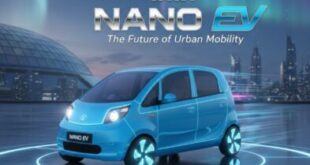When automobiles first entered the scene in the early 20th century, they were referred to as ‘horseless carriages’. Now, more than a hundred years later, another significant revolution is taking place with the launch of autonomous vehicles. First, it was the horses, and now it’s time for humans to be replaced with autonomous vehicles that are powered by self-driven/driverless technology. Globally, the top tech companies are pouring in millions of dollars in driverless technology, as it will provide a lucrative business opportunity in the future. Estimates suggest that driverless technology will generate business worth a staggering $7 trillion in the next few decades. This is why companies like Google, Tesla, Mercedes, Ford, General Motors, Uber, IBM, Intel, Apple, etc. are in the race to grab their share of the driverless pie.
If you are wondering what’s driving these autonomous vehicles, here’s a list of things that you might find inside an autonomous vehicle.
LIDAR: This technology is a vital component of the current generation of autonomous vehicles. LIDAR stands for Light Detection and Ranging and it can be found on top of most autonomous vehicles. What LIDAR essentially does is that it shoots laser lights and measures the reflected beams to create a 3D map of the surroundings. Apparently, a lot of data is processed, which helps create a 3D map that is more accurate and reliable in comparison to 2D camera images. LIDAR technology is quite expensive and may have problems when dealing with specific situations such as bad roads, extreme weather conditions, etc. Efforts are currently underway to make this technology more robust and affordable.
Radars: This technology has been in existence since the early 20th century and now it is being used in autonomous vehicles. Radars use radio waves to detect objects and are very effective at detecting big objects like other vehicles, people, obstructions, etc. Radar technology is quite affordable and reliable and it delivers accurate results even in extreme conditions.
Cameras: Autonomous vehicles normally have cameras on all sides to detect traffic, lanes, traffic lights, speed signs, etc. The data available through cameras is used in conjunction with other intelligent systems installed in an autonomous vehicle.
AI and Machine Learning: Driving a vehicle can present infinite possibilities, comprising various variables such as other vehicles, pedestrians, road signs, obstructions, weather conditions, etc. Since all such possibilities cannot be documented and inputted into the system, it is imperative that driverless technology is powered by artificialintelligence (AI) and machine learning. With AI and machine learning, self-driven vehicles can learn on their own and take the right decisions when faced with unexpected situations.
Maps: Autonomous vehicles utilize detailed maps to find their way on the streets and highways. These maps are prepared beforehand using cameras and LIDAR and are inputted into the driverless system. The maps act as reference points for the autonomous vehicle and allow it to find its way. These detailed maps are much more precise and accurate, as compared to GPS technology. Autonomous vehicles normally have GPS, but actual navigation is ultimately controlled by the detailed inbuilt maps.
Autonomous cars are already operational at select locations such as California, London, Singapore, Beijing, etc. However, their numbers are still minuscule and it will take a couple of decades for them to become commonplace. Driverless technology holds great potential, but it’s certainly not easy. It will require a great deal of testing and tweaking before it becomes readily available to the masses.
 Newspatrolling.com News cum Content Syndication Portal Online
Newspatrolling.com News cum Content Syndication Portal Online






